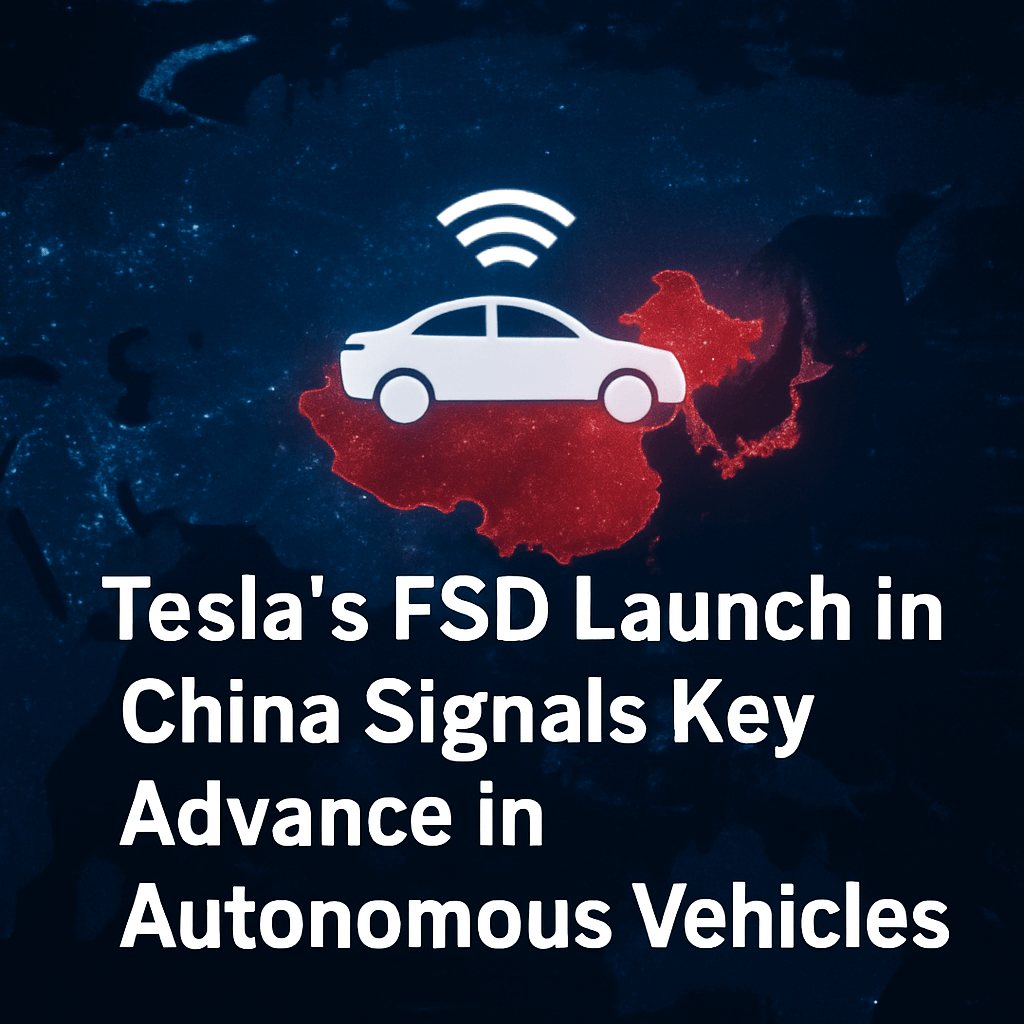Tesla’s FSD Launch in China Signals Key Advance in Autonomous Vehicles

Earlier this year, Tesla’s unveiling of its Full Self-Driving (FSD) platform in China initiated a significant milestone in the evolution of autonomous vehicles. Brian Gu, President of XPeng, referred to this moment as akin to a “DeepSeek moment” for the autonomous vehicle sector, suggesting a crucial comparison between the advanced technologies of U.S. and Chinese companies.
Understanding the Competition
The introduction of Tesla’s FSD service in China has allowed for an unprecedented head-to-head competition between American and Chinese autonomous driving technologies. This event is essential as it enables a direct evaluation of which nation’s technology would fare better under similar driving conditions. Gu articulated the competitiveness of this situation, stating, “In the past few years, we always try to see, can we do head-to-head comparisons of what we have done in China versus what Tesla has done with FSD. We never had that chance.”
This chance materialized with the rollout of Tesla’s FSD in February 2023, which presented a unique opportunity for Chinese companies like XPeng to benchmark their advancements directly against those of Tesla. Gu observed that this marked the first time technology was tested against the intricacies of Chinese traffic conditions in a real-world setting.
Technical Insights and Local Advantages
Despite operating with comparatively fewer resources than Tesla, including lower funding and computational power, XPeng’s autonomous driving technology yielded promising results on Chinese roads, outperforming Tesla’s system. Gu remarked, “The capability of Chinese autonomous driving cars actually did better than FSD in Chinese streets.” This claim is particularly noteworthy given the sophistication and complexity of China’s urban driving environment, often characterized by congested traffic and unpredictable pedestrian behavior.
Moreover, Gu noted that Chinese companies benefit from an implicit “home court advantage,” enhancing the accuracy of their training data derived from localized driving conditions. This edge allows for better optimization of autonomous driving algorithms tailored to meet the unique demands of Chinese roads.
Drawing Parallels with Congruent Events
The use of the term “DeepSeek moment” draws a parallel to a significant event in the AI landscape in January 2023, when the AI startup DeepSeek introduced its R1 large language model. Despite spending a fraction of what U.S. tech behemoths like Google and OpenAI had expended, DeepSeek achieved comparable capabilities. This performance illuminated the potential of Chinese tech firms to deliver high-quality results despite limited funding, highlighting a narrowing gap in technological prowess between the U.S. and China.
Tesla’s Challenges and Adaptations
The deployment of Tesla’s autonomous driving technology in China was reportedly fraught with regulatory hurdles. Following extensive discussions between Elon Musk and Chinese officials, including Premier Li Qiang, the company faced pauses in its rollout due to new regulations concerning self-driving vehicles.
This situation highlighted the complexities of operationalizing advanced driving systems in a tightly regulated environment. This resulted in a temporary suspension of Tesla’s free trial for FSD, which was later reinstated but rebranded as “Intelligent Assisted Driving.” As with any form of level-two autonomy, FSD necessitates that human drivers remain vigilant and prepared to take control as needed, a critical requirement acknowledged by both Tesla and XPeng.
Future Outlook for Autonomous Driving in China
XPeng has communicated its roadmap for advancements in self-driving technologies, with ambitions to achieve level-three autonomy within two years and level-four autonomy by 2026. Gu clarified this timeline during a session at Fortune’s ASEAN-GCC Economic Forum, suggesting a strategic approach in harnessing software advancements to meet regulatory frameworks and market expectations.
The ongoing rivalry in the autonomous vehicle domain presents an array of possibilities for innovation and development. As both U.S. and Chinese firms strive for leadership in this burgeoning industry, the outcomes of these head-to-head comparisons will likely shape the future of mobility on a global scale.
About the Author
Paolo Confino is a reporter on Fortune’s global news desk where he covers each day’s most important stories.
Source: fortune